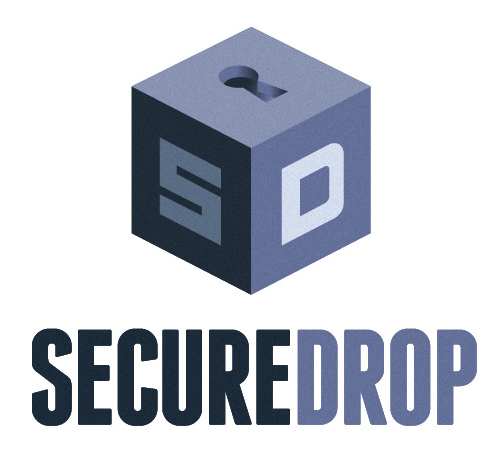 NEWS
NEWS
 NEWS
NEWS
 NEWS
NEWS
![]() Before his suicide in January 2013, Aaron Swartz had worked together with the hacker and Wired editor Kevin Poulson on a platform for whistleblowers called Dead Drop. The software allows the transmission of messages and documents between whistleblowers and journalists. The sources of the data are protected by the fact that even the news organization contacted may not even know who has transmitted the messages. The aim of the tool is to protect information from anonymous sources on the internet.
Before his suicide in January 2013, Aaron Swartz had worked together with the hacker and Wired editor Kevin Poulson on a platform for whistleblowers called Dead Drop. The software allows the transmission of messages and documents between whistleblowers and journalists. The sources of the data are protected by the fact that even the news organization contacted may not even know who has transmitted the messages. The aim of the tool is to protect information from anonymous sources on the internet.
Aaron Swartz did not have it done to complete his big project and now Freedoom of the Press Foundation has done this for him as well as taken charge of the DeadDrop project. In coming months, the Foundation will also provide on-site installation and technical support to news organizations that wish to run the system, which has been renamed “SecureDrop.”
The Open Source SecureDrop
SecureDrop is a safe, secure, virtual system where journalists can exchange information with hackers. The ‘WikiLeaks media’, it has been called, was Swartz’s vision, who has become a symbol of freedom of information and of that part of the digital world.
The system assigns a unique code for each source and thus an anonymous entity can establish a relationship with the media without the need to give a name or face. The New Yorker, was one of the first institutions to adopt SecureDrop under the name “StrongBox.”
In August, the University of Washington safety experts and security expert Bruce Schneier had raised concerns about the safety of Dead Drop. The Freedom of the Press Foundation had therefore entrusted the security professional James Dolan with the revision of the software. Even now, with the main problems resolved, further improvements has been promised. Dolan had already helped the New Yorker build and secure their own Dead Drop Strongbox implementation.
Any organization can install SecureDrop for free and can make modifications because the project is open-source. The foundation has written detailed installation instructions, which can be found on GitHub.
Although its creators do not guarantee 100% security, they do say that this tool has been tested in several studies to prove its high levels of security, but there are always risks. SecureDrop runs a public servant who serves in the face for the project, another server that archives the messages and documents and another that monitors the safety of the first two. SecureDrop still relies on donations to stay alive, but also accepts comments from developers interested in discussing the topic.
WikiLeaks, PRISM, and SecureDrop
With all the hype of WikiLeaks, PRISM, Edward Snowden and NSA that shock the world, a system in which people can share their knowledge in a completely anonymous way seems no longer a luxury in this period.
First it was the persecution of Julian Assange and WikiLeaks for publishing movements against the U.S. embassies in other countries, including allies. Then were the allegations of the informant Edward Snowden, who revealed the delirious international spy network set up by the NSA. Later, Chelsea Manning was sentenced for leaking videos and documents about the abuses being done by the U.S. military in Afghanistan.
SecureDrop is trying to motivate the right sources of information that can be delivered on any kind to any medium. SecureDrop is the safest way for an anonymous source to send information to journalists while protecting their identity. The new platform uses Tor browser to surf the web anonymously, to allow users to upload documents safely on the hidden server, just like the ones used by websites that do not want to be found (e.g. Silk Road). In this way, journalists can access the secure server, download documents and exchange messages with the original source, without knowing the name or other sensitive data.
“We’ve reached a time in America when the only way the press can assure the anonymity and safety of their sources is not to know who they are,” said JP Barlow, co-founder and board member of Freedom of the Press Foundation. “SecureDrop is where real news can be slipped quietly under the door.”
The Press Foundation said SecureDrop code written in Python has gone through extensive security audit by a team of University of Washington researchers, led by Alexei Czeskis, security expert Bruce Schneier and Tor developer Jacob Appelbaum.
“A truly free press hinges on the ability of investigative journalists to build trust with their sources,” said Freedom of the Press Foundation Executive Director Trevor Timm. “The recent NSA revelations and record number of whistleblower prosecutions under the current administration have shown the grave challenges to this relationship and the lengths governments will go to undermine it. Freedom of Press Foundation is committed ushering in a new era of security for journalists and newsrooms of all sizes.”
Freedom of the Press invites media to use and improve this software to keep the flow of information and avoid threats of any kind.
Support our mission to keep content open and free by engaging with theCUBE community. Join theCUBE’s Alumni Trust Network, where technology leaders connect, share intelligence and create opportunities.
Founded by tech visionaries John Furrier and Dave Vellante, SiliconANGLE Media has built a dynamic ecosystem of industry-leading digital media brands that reach 15+ million elite tech professionals. Our new proprietary theCUBE AI Video Cloud is breaking ground in audience interaction, leveraging theCUBEai.com neural network to help technology companies make data-driven decisions and stay at the forefront of industry conversations.